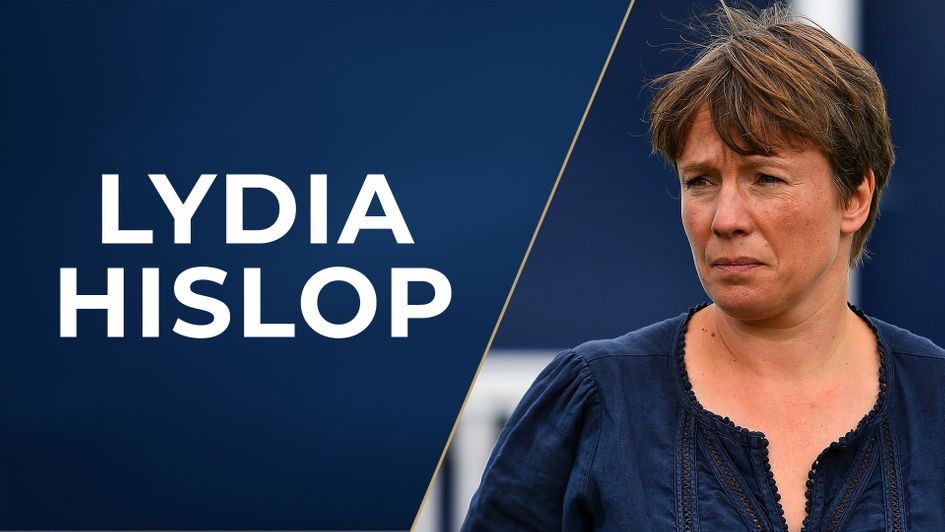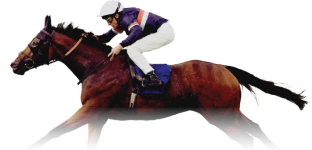Once the photograph emerged via social media of Gordon Elliott sitting astride a dead horse – on the phone, his other hand raised in a two-fingered victory-like gesture – soon followed by a video of amateur jockey Rob James pretending to ride another carcass, both men were rightly condemned for their acts of callous indecency.
Both images were swiftly shared around the globe, to near-universal revulsion and the worldwide shame of the horseracing industry.
On Friday, the Irish Horseracing Regulatory Board’s Referrals Committee convenes to consider its case against Elliott, most likely under Rule 272 (i), addressing “behaviour… prejudicial to the integrity, proper conduct or good reputation of horseracing”.
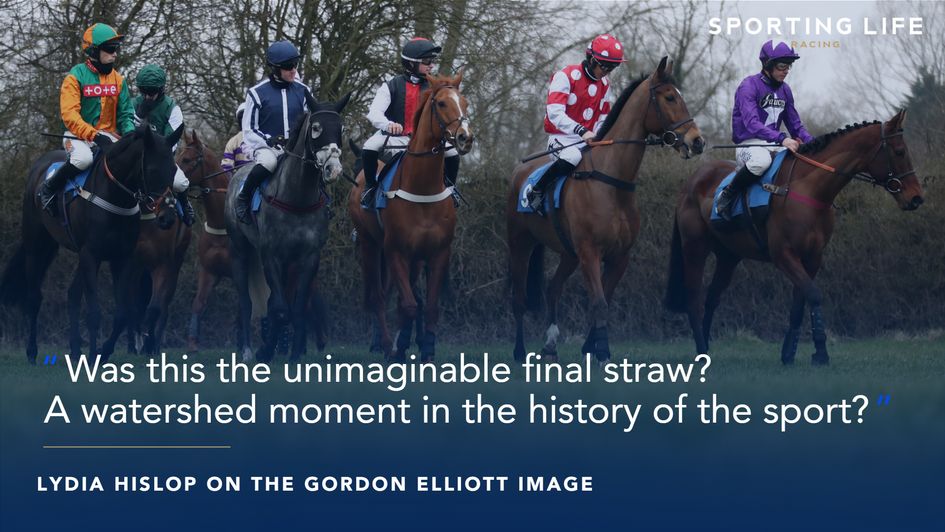
Whatever the outcome, it is unlikely to satisfy everyone, as proportionality will be difficult to achieve. The Committee must weigh the evident but hard-to-quantify impact on the sport’s standing against the self-inflicted devastation Elliott’s gross misjudgement has already wreaked on his reputation, his career, his business and those who rely on him for employment.
But that’s the IHRB’s business and I don’t plan to pre-empt it here. What I want to address is why the racing industry has chosen this incident, above all others, on which to visit loud, unprompted and more or less unanimous censure?
Why not in 2001, for instance, when Mick Quinn was banned for three years – reduced to 18 months on Appeal – for the neglect of three horses under his care? The then-Jockey Club ruled that the overall condition of those horses “fell below that expected of a licensed trainer”.
In that moment in time, before the maelstrom of social media, his case received a great deal of coverage due to Quinn’s previous fame as a footballer.
Why not in 2011, when trainer Howard Johnson was banned for four years by the British Horseracing Authority for de-nerving a horse, leaving it with impaired sensation in a lower limb, and yet racing it eight times subsequently – thus placing jockey, opponents and staff at risk?
Why not in 2006, when jockey Paul O’Neill was caught on camera headbutting a horse and was banned for just a single day. At the time, a spokesman for the then-Horseracing Regulatory Authority made this distinction, perhaps pertinent today: “It is very important to remember this horse was not injured – the RSPCA, our vet and the trainer say it wasn’t injured…
“It is damaging to have these images broadcast and I did think at one stage he might have brought racing into disrepute and he probably has, but… it would be wrong of us to change the charge as it captured the public imagination.”
Why not in 2017, when in Ireland Davy Russell was initially handed down a mere caution for punching a horse – an act also captured on TV? Doubtless prompted by the outrage among wider society, led by animal-welfare charities and fuelled by social media, the then-Turf Club’s internal review resulted in its Appeals body over-riding that inadequate verdict with a four-day suspension.
There have also been other cases – involving hitting, punching or kicking horses – by jockeys and stable staff in Britain, Ireland, France, America and Australia – all caught on camera and resulting in bans.
I’m not suggesting that nobody in the sport spoke out against any of the above conduct – and I am sure that many more were appalled – but nothing has breached the racing bubble quite like that image of Elliott.
Racing shaken from complacency
Perceiving an injustice, many online whatabouterists have implied an anti-Irish racism on the part of the British press. Others have alleged a preference for supposed easy targets, pointing to the industry’s comparative silence on wider news matters – like the civil court judgment and allegations made against Sheikh Mohammed, which have drawn zero official comment from Britain or Ireland.
But I’d like to stick to the point here. That point is: why did it take the mockery of two dead horses, rather than actual or perceived harm to living ones – or, indeed real risk to human life – to shake the racing industry from its complacency?
Only four years ago, Russell felt comfortable enough to berate the media for its coverage of his punching incident. “What the press have done is unacceptable,” he said.
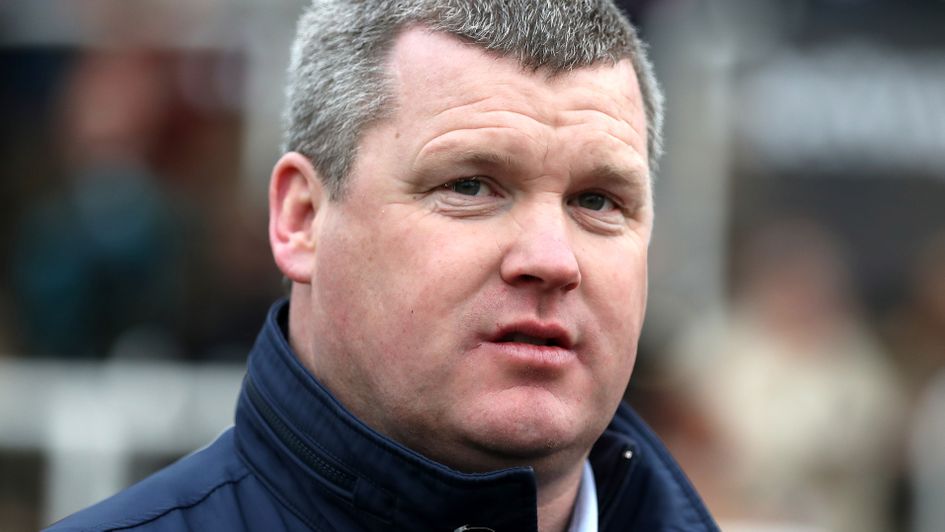
“Not just to me, but to my family as well. My family are involved as well. They were mentioned in articles along the way. It is not just me anymore. I have a wife and children.”
Only last month, on Racing TV’s Luck On Sunday programme, Russell pointedly gave the public cold shoulder to former Racing Post editor Bruce Millington, who wrote about that incident at the time. It wasn’t clear whether this childish behaviour was solely in response to that column or mingled with a wider unhappiness about the industry’s modern relationship with the paper as a whole, but the three-times Irish champion jockey appeared confident in his ground.
It was a very different Russell who struggled to explain Elliott’s behaviour to a mainstream audience on RTE’s Primetime show on Tuesday night. Wide-eyed, nervous, uncomfortable and perhaps shellshocked from having visited Elliott’s devastated team earlier that day, he did not know what to say. It was understandable that he should have sought to defend his friend and colleague, but the issue had long run far beyond racing’s usual mind controls. It had done so within seconds of that image being thrust into the oxygen of public opinion.
Yet in contrast with the cases cited above, there has been little or no attempt at defence or justification of Elliott or James from within the sport – albeit that in itself does not necessarily signify unambiguous condemnation.
Many leading figures – Ruby Walsh, Mick Fitzgerald, Peter Scudamore, Ted Walsh, Oliver Sherwood, Jane Mangan, Francis-Henri Graffard, Jamie Snowden, David Menuisier – have spoken out against these acts with an unequivocality and universality I cannot previously recall. The BHA made a damage-controlling statement as early as last Sunday, followed by the National Trainers’ Federation the following day, both having been contacted by a series of trainers urging them to do so. The Irish Trainers’ Association added its voice on Tuesday.
Why is this where the line has finally been drawn by the industry? You may have some other theories about what’s going on, but these are my initial thoughts.
Primarily and overwhelmingly, it’s the power of the image. It’s an ugly, unambiguous tableau – even if its living subject purported that his pose was absentminded and his expression unfortunately caught by the camera and misconstrued. It’s a simple image that doesn’t require explanation, interpretation or translation. It also cannot be got around in any way.
It’s uncomfortably reminiscent of those posed for by big-game trophy-hunters. Except that this is a famous and successful racehorse trainer, sitting on the lifeless body of an animal whose owners paid him to train and nurture it.
Outrage and trust issues for owners
It doesn’t matter that this horse, Morgan – who died in 2019 of a suspected heart attack – was owned by Michael and Eddie O’Leary via their Gigginstown Stud operation and that they are explicitly standing by Elliott. Other racehorse owners are outraged by this scene and, emblematically, Morgan stands for their trust in whichever trainer they choose to employ.
Unlike the occasions on which practitioners have argued that their actions fell within the normal boundaries of a horseman’s behaviour – those mystical lores that civilians have no right to question – this image was instantly and democratically identifiable as improper.
In the past, commentators have been asked to accept that horsemen know best, no questions asked. “I had no anger towards the filly,” Russell explained during his brush with the authorities in 2017. “It was a matter of trying to get her back under control and trying to get her to pay attention.”
In 2011, we learned that a neurectomy is a legitimate veterinary procedure to improve the quality of a horse’s life in relative retirement – it’s just that a racing authority doesn’t accept horses, who can’t feel part of their leg, endangering human life and their own by taking part in races.
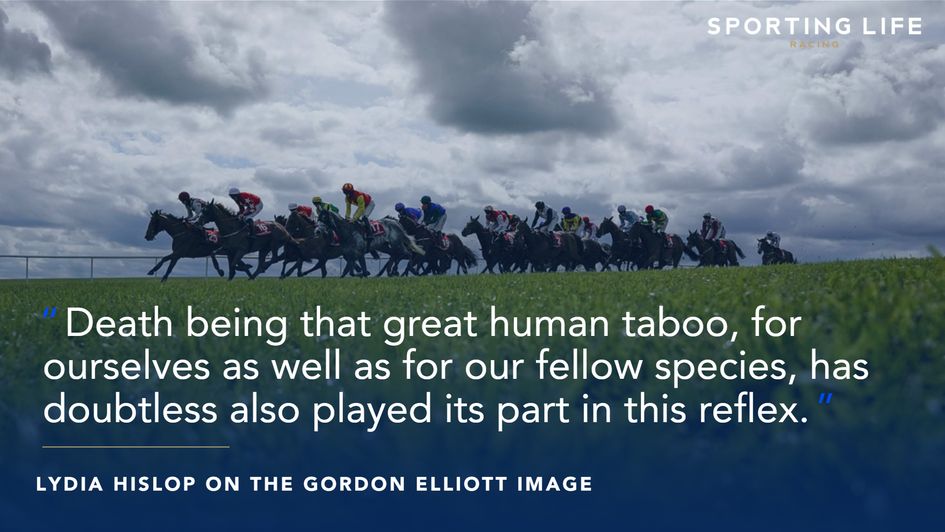
Yet Graham Wylie, Johnson’s friend and chief patron at the time, defended him, saying: “The operation was done because the horse was hurting. He actually won three races after he had the operation.”
There is no defence available in this case. This is the gratuitous use of a dead horse as a prop in what appears to be a grim joke. I’m sure it’s plausible that, for some humans, regularly dealing with deadstock can lead them to be less sentimental about the details of death and gallows humour might occasionally leak out, but it is the responsibility of the person in charge to keep that in check rather than join in.
To do otherwise is to forget your responsibilities and to let down your profession, your investors and – as they have painfully discovered – your staff.
Whoever took the photograph and whoever captioned it “new work rider this morning”, surely to share among a group, has also exercised a degree of premeditation that adds to the offensiveness of the act. In his initial statement, Elliott referred to the death of any horse being “a sad time” and yet the act of taking this photograph was inconsistent with that sentiment.
But how to compare? Well, to kick or hit a horse might be reactive and instantaneous but to leg up a human on a dangerously desensitised horse? That’s off the premeditation scale by comparison, surely? Distasteful and bitterly disappointing though this incident has been, it cannot fairly be ‘ranked’ above endangering human life or risking the pain or suffering of an animal.
And yet it has provoked stronger, more universal disgust. Death being that great human taboo, for ourselves as well as for our fellow species, has doubtless also played its part in this reflex.
A watershed moment in the history of the sport?
But Morgan also stands for the trust that racing fans – by being interested in the sport – and wider society – by permitting it to get on with regulating itself – invest in its participants to look after the wellbeing, welfare and dignity of the animals involved. To treat them with respect, in life and death. Once that bond is broken, the racing industry knows it can’t simply protest “the horse comes first” or “the welfare of the horse is paramount” because it won’t be believed.
So, perhaps those in the industry who have spoken out sense an existential fight in the air. A powerfully explicit image with a global reach, depicting a high-profile trainer, is a new frontier. When Johnson was found guilty in 2011 – and certainly in 2001, when Quinn was punished – social media was not as all-pervasive as it is now, nor were the campaigners who have harnessed its maximising potential as organised and well-rehearsed.
Morality evolves, too – what might have been seen as an appropriate response or sanction 20 years ago – even five years ago – could appear outdated and inappropriate to contemporary eyes.
There’s also the pressure-cooker element – the incremental effect of the steady drip-drip of a range of public criticism, whether justifiable or not, about the morality of the whip or racecourse fatalities or the fate of thoroughbreds once they are no longer fit for racing… Was this the unimaginable final straw? A watershed moment in the history of the sport?
Its reaction certainly suggests that the racing industry is no longer tone deaf to the shifting societal standpoint on the place of animals in modern civilisation. Perhaps it even suggests that some of its fans are shocked by this image because they do not want to be reminded so starkly of elements of this sport that they have not yet reconciled with themselves and might make them uneasy.
Yes, there is outrage and betrayal, revulsion and disappointment in what is happening here. But, if we look closely – at ourselves and not just at the image – more than anything else, there is fear.
Cheltenham Festival - The ultimate guide
The 2021 Cheltenham Festival gets under way on Tuesday March 16 and we've got all the information you need ahead of the four-day spectacular.






